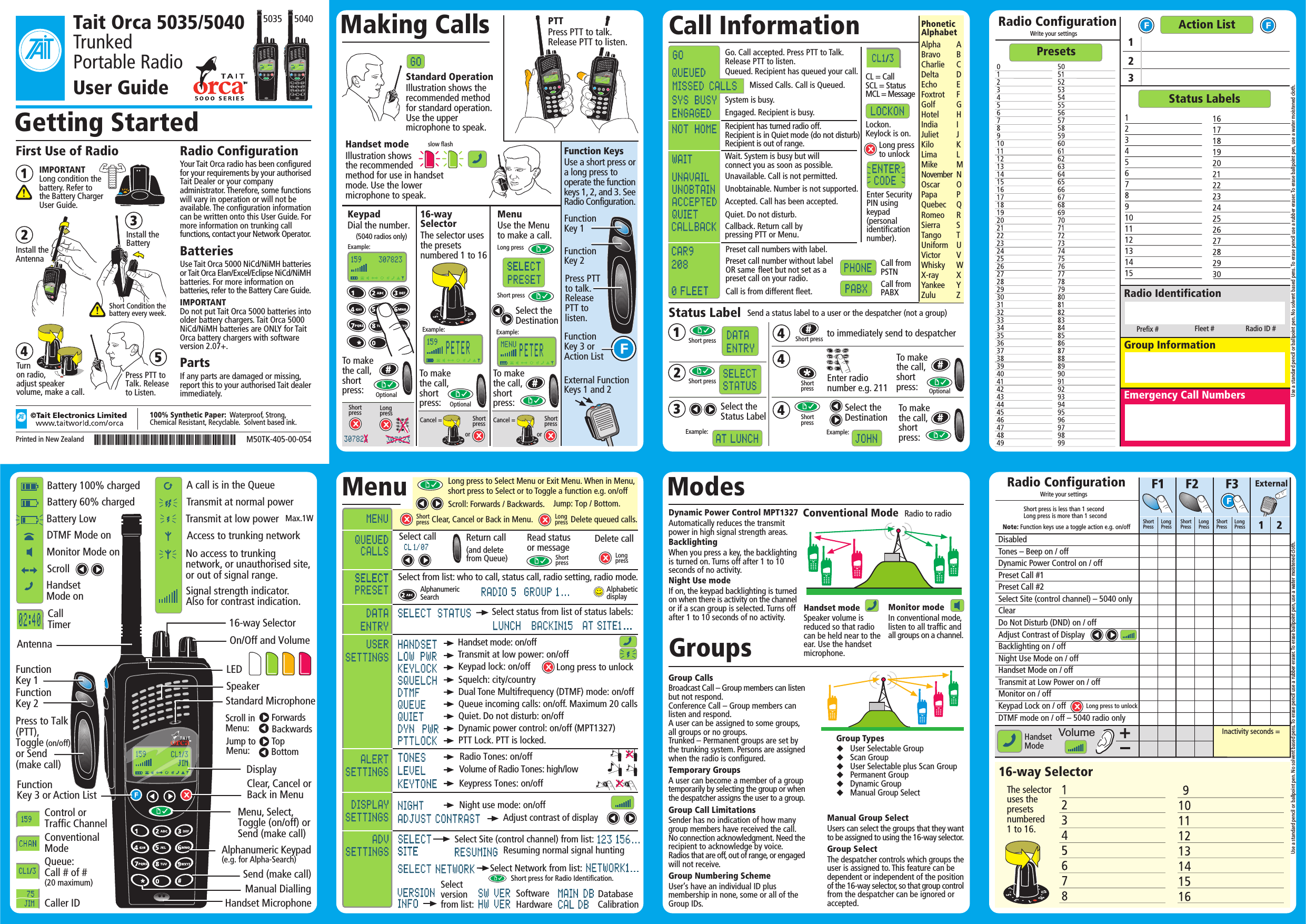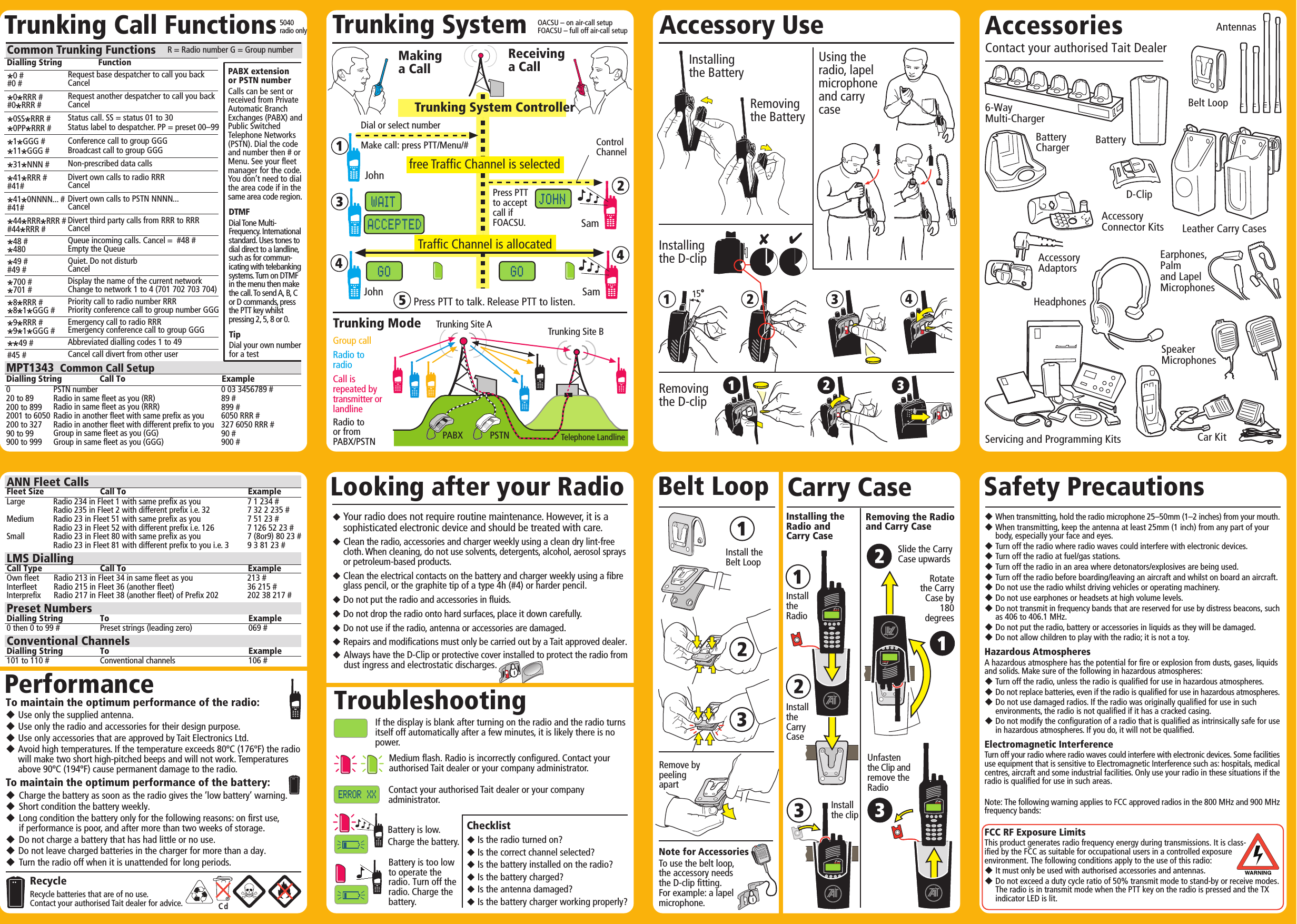Tait TEL0037 Hand Portable Transceiver User Manual Updated User guide to include new duty factor information
Tait Limited Hand Portable Transceiver Updated User guide to include new duty factor information
Tait >
Updated User guide to include new duty factor information

